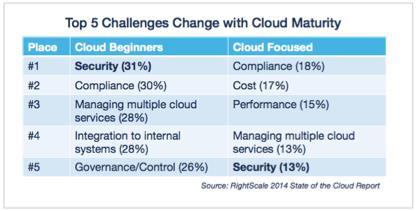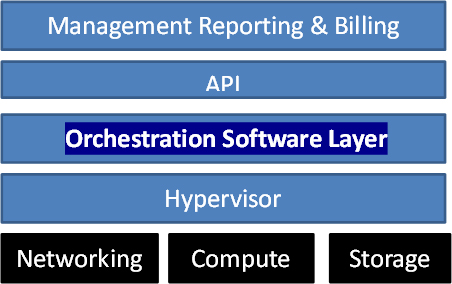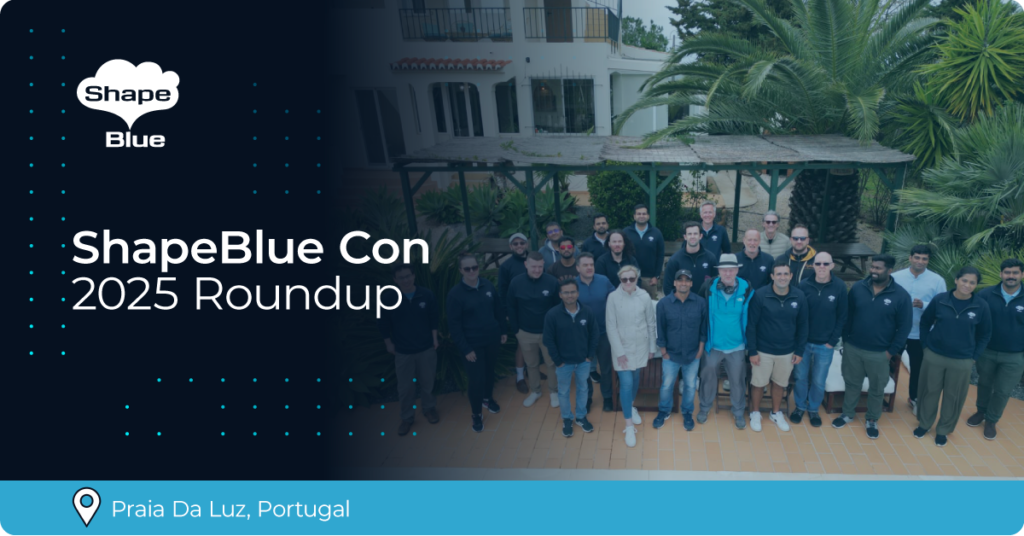The broad adoption of cloud computing services in South Africa has gained pace in the past 12 months. Uptake in 2014 is still expected to be slower than some other African countries (Nigeria, Kenya) but the accelerating use of software-as-a-service (SaaS), in country Infrastructure-as-a Service (IaaS) and the lessons learned from other worldwide regions, provides the opportunity for South African businesses to increase levels of trust in cloud compute delivery models and catch up with other African regions in the second half of the year.
Read the full whitepaper in PDF format here
The Hybrid Cloud Strategy
The broad adoption of cloud computing services in South Africa has gained pace in the past 12 months, and although slower than some other African countries (Nigeria, Kenya), this is set to dramatically change, with indications pointing to the rapid acceleration in use of Software-as-a- Service (SaaS), in-country Infrastructure-as-a-Service (IaaS) and the creation of corporate hybrid cloud computing models to support the changes. Driven by factors such as changes in workstyles, user device proliferation, emerging cloud-native applications and mobile application growth, alongside continued advances in mobile LTE services, further investment from carriers in fixed broadband, and the Connect South Africa policy implementation – South Africa is poised to take further advantage of new methods of IT service delivery and continue to drive competitiveness locally and internationally.
South Africa broadband speed distribution (Source: Cisco Global Cloud Index, 2013):
South Africa is considered a ‘Cloud Emerging’ territory, based on current fixed network characteristics, (Cisco Global Cloud Index Supplement:Cloud Readiness Regional Details) and while average download speeds in South Africa are significantly lower than parts of Europe, average speed has just broken 4Mbs with scope for further improvement as the ‘South Africa Connect’ policy measures take effect. POPI regulations with requirements for data belonging to individuals be housed within the borders of South Africa will drive additional local investment in IaaS services, addressing the anticipated growth rate of 35% CAGR, with the cloud ICT market worth $215m by 2017. (Linklaters Generation Next/The Cloud).
South Africa is also an important hub for access to the rest of sub-Saharan Africa. Home to 70% of Africa’s major companies and with increasing numbers of US and European organisations terminating networks in South Africa to access other territories on the continent, it is increasingly likely that major international IaaS providers will make investments to capture this level of anticipated revenue growth.
This developing cloud landscape not just in SA, but globally is also driving changes in how traditional IT functions are structured and opens the way for new projects which can unlock value across the organisation and better align IT with line of business stakeholders. South Africa is already seeing value derived from linking secured corporate data, and offsite SaaS services via integration platforms such as Boomi and Mulesoft, but what about the next steps, e.g moving beyond SaaS towards IT-as-a-Service (ITaaS)? This term is the new nirvana, and in reality a long way off being anything like ‘business as usual’ but as an aspirational (albeit often overused) ideal it is useful in defining the principles we are working towards, and a start on the journey that many South African businesses will soon be making, if not started already.
That starting point is to create a Hybrid Cloud Strategy. That is, combining SaaS, private internal cloud services, and public IaaS in a way that achieves individual business objectives.
A hybrid cloud strategy combines the evolution of fixed capacity on premises or hosted IT infrastructure into dynamic, scalable and flexible private (or internal) cloud services alongside the use of public IaaS to allow seamless and infinitely scalable on demand ‘cloud bursting’. This allows IT to service current workloads and prepare for the cloud-era applications.
The levels of maturity in cloud adoption in other territories provide a backdrop that enables emerging territories, such as South Africa to take advantage of the lessons learnt and how common early adopter issues such as security and compliance, cross-border data transfer and risk profiles have been addressed. Security concerns, which were the number one issue for early cloud adopters have dropped to fifth place in more mature users, and increased benefit has been unlocked as more workloads have migrated to the cloud.
When defining and documenting a cloud strategy, the question is often asked – where do I start? Perhaps we should address a slightly different question first, WHY do I start? Taking the first steps to shifting any business process requires a thorough understanding of the problems to be fixed, resource planning and a focus on disciplined execution.
IT has changed, no longer are siloed stacks of proprietary high end infrastructure servicing line of business applications, with off site DR, intolerant of failure and managing reliability SLA’s. Internal development teams need to move faster and lines of business need more control.
Business now needs access to applications that were simply born in a different era to most of the current infrastructure!
The ‘WHY’ can be further broken into several strategic reasons:
Improved Efficiency – how do IT leaders continue to innovate, improve service delivery, remain relevant and provide value to their organisation with reducing budgets, manage new expectations from across all lines of business (often based on consumer tools) and handle the usual ‘multiple fires’ situation? The creation of a cloud strategy unlocks efficiency by allowing IT to act as the internal provider of a range of shared services common to multiple lines of business, with varying levels of self service to allow different user groups access to resources they need to be productive, rather than individually managing different SLA levels, change control windows, patching and compliancy requirements, capacity and security variations etc, and the underlying hardware and databases required. This will require new levels of collaboration between departments and the creation of new shared functions.
Increased Agility – Requests from multiple sources are coming thick and fast, and often will result in latency to service requests being fulfilled. By providing a more consumer like self-service experience IT can give some ownership and thus more responsiveness and slow down the advance of unauthorised, unmanaged and often undetected third party services creeping into operations due to speed issues. Getting new services, products, launches and features to market rapidly is critical to remain competitive, and a platform that allows an organisation to act on new opportunities quickly provides competitive advantage.
Greater Flexibility – the ability to quickly accommodate cloud-era workloads and scale underlying infrastructure resources to cater for spikes in real time and back again without heavy manual intervention is desired and cloud platforms deliver this elasticity. Building internal infrastructure on commodity hardware, and utilising elastic load balancing and global load balancing to tolerate hardware failure in given locations enables a new way of architecting IT systems, ready for next-gen services.
Enhanced Collaboration – between departments and functions. IT wants a more service based relationship with lines of business, so it follows that IT must have a service based structure internally before that can occur. This will mean a cultural shift in approach to managing the disciplines of development and production/operations and likely new roles for architectural principles to bring together disparate teams.
OK – so HOW do I start?
Improved efficiency and increased agility are of course all things we want, but a cloud strategy needs to be specific in terms of what the expected outcomes are. What applications do I have now and will I be using in the future? Who are the users and stakeholders? What cloud security policies do we need? When do we go offsite and when on premises? What is the timeline for the strategy? What availability and DR considerations do we have? What are our cost policies?
One thing is for certain, that in 24 months application requirements and user expectations will look very different, and a change is required now.
When discussing new deployments, you want to be looking at your watch, not the calendar!
So, given we accept that fixed bandwidth, vertically tiered application silos built with top end so called ‘best of breed’ technology stacks, supporting traditional enterprise workloads such as ERP, SAP and Oracle Financials (often duplicated for multiple business units) are not the only workloads that IT must deliver, even today. Further, that the growth in flexible, variable, horizontally scalable platforms supporting workloads born in the cloud-era is an inevitability, what are the components required to build a sustainable hybrid cloud platform for this growth?
Firstly, a collaborative approach between functions and departments that have historically remained as wholly separate disciplines needs to be nurtured with clear common goals and governance built in. Cloud ‘build’ projects provide an ideal collaborative environment, and provide a natural stage for traditional roles and skillsets to be evolved.
Call it Devops, call it Application Delivery, call it Stacey, it doesn’t matter! As long as the fundamentals of collaboration and common purpose are in place, the journey to IT-as-a-Service will be underway!
Devops – start the change in culture with a relevant project that delivers real results and evolve!
Choice of cloud platform – a critical decision
The layer that is used to turn existing infrastructure into a dynamic, flexible private cloud is known as the ‘orchestration layer’. Positioned above the hypervisor in the stack, the orchestration layer turns existing (or new commodity) storage, compute and networking assets into scalable virtual machines that can be created and destroyed as required.
The market for cloud orchestration is broken down into offerings with various strengths and limitations, and from different backgrounds.
In order to truly lay the foundation for a successful hybrid cloud strategy, it is important to consider the two distinct types of workloads which need to be delivered, as discussed earlier, namely cloud-era workloads such as big data analytics, social media web applications and traditional workloads such as SAP, ERP and Oracle, typically based on n-tier architectures that existed long before the advent of cloud computing.
Your chosen platform must be able to support both types, given both need to be delivered, notwithstanding the evolution that even enterprise apps will encounter as they become more distributed and less dependent on current delivery models.
The orchestration layer in the cloud ‘stack’
A number of commercial enterprise solutions are available, including those from VMware and Microsoft which build upon existing investments in server virtualisation and offer private cloud services well suited to traditional enterprise applications, and those from the community supported Open Source space, such as Eucalyptus which has strong integration with the market leading public cloud provider Amazon Web Services, and are well suited to cloud era workloads.
Citrix Cloud Platform, powered by Apache CloudStack, and its open source version, known simply as CloudStack have emerged as leaders in both product maturity and deployed production clouds supporting all types of workloads. Citrix Cloud Platform and Apache CloudStack provide users the choice to take either a commercially supported version from Citrix, with all the assurances of world class enterprise software support from a market leader in cloud and virtualisation technologies, or a community supported OSS version. Both versions of the product share a common code base, and have wide industry deployments: http://www.citrix.com/customers.html?product=cloudplatform&industry=all-industry&solution=all-solution
When considering the orchestration layer, extensive field deployments, proven support packages and an active community on the OSS side are important considerations. The Apache CloudStack community is active and vibrant, with high participation ratios and a lively events calendar which continues to build momentum, and with the Citrix version, CloudPlatform provides an enterprise wrap which many corporates will require.
One measure of community involvement and activity is the number of messages generated by user and developer mailing lists, and as of Q1 2014, the CloudStack community proves to be matching other OSS projects and attracting contributions from a growing number of participants. The past 12 months alone has seen 50% growth in the number of CloudStack project participants. (Source qjiang@ieee.org).
What about my existing investment in technology?
But what about the multiple $000’s investment in top end technology that is humming way in local datacentres (and replicated for DR)? This investment is safe, in fact it is desired, because as we know, the critical line of business applications they support will continue to require that level of robustness, the good news is that a hybrid cloud model will enable flexible deployment options to provide traditional and cloud era workloads access to the infrastructure they need, all managed by a common orchestration platform.
Existing investments are protected, and a hybrid cloud strategy enables ongoing migration for these platforms, as well as extending their life.
So what next?
Introducing CSForge
Using experience built up over multiple cloud builds, for both service providers and enterprises, in geographies worldwide, ShapeBlue have recognised a degree of commonality between projects, and that a proven, standardised deployment method for Hybrid Cloud builds would be of benefit to emerging territories.
CSForge is a framework developed by ShapeBlue to deliver the rapid deployment of a standardised CloudStack powered IaaS cloud for small production deployments or medium scale POC’s and pilots.
The framework can be used as a basis for either public cloud or enterprise private cloud deployments.
Based on ShapeBlue’s extensive experience building IaaS clouds and managing Devops integration for global customers such as BskyB, SunGard Availability Services, TomTom, Ascenty DataCentres and many others, we bring to the South African market a proven delivery model, based on truly open platforms, with a fixed price, low risk deliverable based engagement to accelerate your cloud strategy.
CSForge will allow you to avoid the lock-in often associated with software vendors, and delivers a fixed-price, low risk approach and the peace of mind of commercial support and services from the most experienced integrators of CloudStack globally.
CSForge provides the fixed price, low risk, high impact starting point that many customers are looking for, retaining the principles of open solutions and collaborative processes
CSForge delivers:
- A pre-built, tested, and proven deployment methodology
- The deployment of a fully functional CloudStack cloud on between 3 and 24 compute hosts with 1 or 2 management hosts
- The ability to avoid vendor lock-in by exploiting open source technology
- A workshop & training programme that allows you to fully exploit the possibilities of an IaaS environment
- Automated cloud testing tools
- Automated/scripted deployment of components using industry standard configuration management tools.
- A known baseline on which to further develop your IaaS environment and hybrid cloud strategy
- Predefined capacity planning
- Out of the box prebuilt operating system templates
- An SLA based technical support model
Conclusion
In order to provide a starting point for the evolution of cloud services it is important to:
- Define the problems and desired outcomes upfront
- Align resources for a cultural shift
- Choose your orchestration tools carefully, considering todays and tomorrows environments
- Pick a starting point
ShapeBlue with either CSForge or Citrix CloudPlatform, combined with extensive experience in building clouds and advising on cloud strategy, and backed by global SLA driven enterprise support, provide that starting point in the evolution to ITaaS.
About the author
Dan Crowe is Managing Consultant at ShapeBlue South Africa. ShapeBlue are the leading independent global CloudStack integrator, with presence in Cape Town, London, Rio De Janeiro, Bangalore and Mountain View,CA.
For more information, please contact info@shapeblue.com or contact the Cape Town office on +27 (0) 21 035 0318
www.shapeblue.com
@shapeblue
@shapedan
Giles is CEO and founder of ShapeBlue and is responsible for overall company strategy, strategic relationships, finance and sales.
He is also a committer and PMC member of the Apache CloudStack project and Chairman of the European Cloudstack User Group, actively helping promote brand awareness of the technology.
Giles can regularly be heard speaking at events around the globe, delivering visionary talks on cloud computing adoption and more specifically on Cloudstack technologies.
Before ShapeBlue, Giles held C-Level technology positions for 15 years including founder and CEO of Octavia Information Systems, a leading UK Managed Service Provider.
Giles holds a BSc in Engineering Physics from Sheffield Hallam University. Outside work, Giles is married with two teenage children. He coaches children’s rugby, is a competitive masters swimmer and can regularly be seen crying when his beloved Tottenham Hotspur lose.












